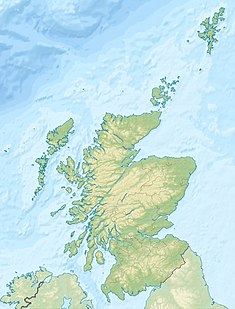Cockenzie power station
| Cockenzie power station | |
|---|---|

Cockenzie Power Station
Viewed from the south in March 2003 |
|
| Country | Scotland |
| Location | Cockenzie |
| Coordinates | 55°58′06″N 2°58′18″W / 55.96833°N 2.97167°WCoordinates: 55°58′06″N 2°58′18″W / 55.96833°N 2.97167°W |
| Status | Demolished |
| Commission date | 1967 |
| Decommission date | 15 March 2013 |
| Operator(s) |
South of Scotland Electricity Board (1967–1991) Scottish Power (1991–2013) |
| Thermal power station | |
| Primary fuel | Coal |
| Power generation | |
| Nameplate capacity | 1,200 MW |
| grid reference NT394754 | |
Cockenzie power station was a coal-fired power station in East Lothian, Scotland. It was situated on the south shore of the Firth of Forth, near the town of Cockenzie and Port Seton, 8 mi (13 km) east of the Scottish capital of Edinburgh. The station dominated the local coastline with its distinctive twin chimneys from 1967 until the chimneys' demolition in September 2015. Initially operated by the nationalised South of Scotland Electricity Board, it was operated by Scottish Power following the privatisation of the industry in 1991. In 2005 a WWF report named Cockenzie as the UK's least carbon-efficient power station, in terms of carbon dioxide released per unit of energy generated. The 1,200 megawatt power station ceased generating energy on 15 March 2013 around 8.30am. As of May 2014[update] the main station is being dismantled by Brown and Mason Ltd, a UK-based demolition company. There are plans to replace the station with a Combined Cycle Gas Turbine (CCGT) power station. The removal of the power station was done in stages with the iconic twin chimneys and the turbine hall of the power station being demolished in a controlled explosion on 26 September 2015, the front section of the boiler house being demolished on 4 November 2015 and finally the rest of the boiler house being demolished on 17 December 2015. This was the last remaining major structure to be removed.
Under a design by the firm of celebrated architect Sir Robert Matthew, construction of Cockenzie power station began in 1959 on the site of the former Preston Links Colliery. The site is also thought to have been the hiding place of General John Cope after the defeat of his army at the Battle of Prestonpans on 21 September 1745. Much of the electrical equipment for the station was manufactured by Bruce Peebles & Co., Edinburgh. SSEB set aside £60 million for the station's construction, however the final cost amounted to £54 million, around £6 million under budget. The station began generating electricity in 1968 for the then South of Scotland Electricity Board (SSEB). In 2000-01, Cockenzie generated a record load factor, supplying 3,563 GWh of electricity and burning 1,500,000 tonnes of coal.
...
Wikipedia

